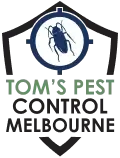Prompt, Affordable Same-Day Pest Control in Melbourne – From $129.
- Home
- Pest Treatments
- Termite Inspection & Treatment
- Ant Pest Control
- Bed Bug Treatment
- Beetle Pest Control
- Bird Proofing
- Borer Pest Control
- Cockroach Control
- Flea Treatment
- Fly Control
- Fox Trapping
- Mites Control
- Mosquito Pest Control
- Moth Control
- Possum Removal Service
- Rodent Control
- Silverfish Treatment
- Spider Control Treatment
- Wasp Control Services
- End of Lease Pest Control
- Commercial Pest Control
- Office Pest Control
- Restaurants & Cafes Pest Control
- Hospitality Pest Control
- Education Facilities Pest Control
- Hospital & Aged Care Pest Control
- Pest Control Food Industry
- Factories & Warehouses Pest Control
- Government Buildings Pest Control
- Assets & Facilities Pest Management
- Farming and Agriculture Pest Control
- Strata Pest Control
- Construction Pest Control
- Termites
- Pest Info
- Pest Inspections
- Contact
- Home
- Pest Treatments
- Termite Inspection & Treatment
- Ant Pest Control
- Bed Bug Treatment
- Beetle Pest Control
- Bird Proofing
- Borer Pest Control
- Cockroach Control
- Flea Treatment
- Fly Control
- Fox Trapping
- Mites Control
- Mosquito Pest Control
- Moth Control
- Possum Removal Service
- Rodent Control
- Silverfish Treatment
- Spider Control Treatment
- Wasp Control Services
- End of Lease Pest Control
- Commercial Pest Control
- Office Pest Control
- Restaurants & Cafes Pest Control
- Hospitality Pest Control
- Education Facilities Pest Control
- Hospital & Aged Care Pest Control
- Pest Control Food Industry
- Factories & Warehouses Pest Control
- Government Buildings Pest Control
- Assets & Facilities Pest Management
- Farming and Agriculture Pest Control
- Strata Pest Control
- Construction Pest Control
- Termites
- Pest Info
- Pest Inspections
- Contact
Coastal Brown Ants
What Is Coastal Brown Ants?
Coastal brown ants, also known as big-headed ants, are a major pest ant species found in many parts of Western Australia. This species has two types of worker ants named major or soldier ants and minor workers.
These ants do not sting but may create a nuisance in your garden or home in search of food. Their diet includes a variety of things, but they prefer eating sweets and food of animal origin,
The coastal brown ants are tiny, light brown ants, having shiny dark brown abdomens. The minor workers are 2-3mm long, while the major ants are 3.5-4.5mm long. These major ants have much larger heads than their bodies and make up 1 per cent of the population.
The major or soldier worker ants aren’t defensive but have powerful jaws that they use to cut large pieces of food into smaller, easy-to-carry pieces. These ants have no odour when crushed.
These ants nest in disturbed soils, flowerbeds, and below objects like bricks, flowerpots, and cement slabs. Finding these creatures around trees or water pipes, along the walkways, and in areas with displaced soil is also possible.
No matter how well cared your lawn is, there’s always a possibility of coastal brown ant infestations. Even if the infestation is less noticeable, you will likely see these ants along the edges, where your lawn meets the walkway. These ants spread quickly to the neighbouring areas to establish new nests.
The lifecycle of the coastal brown ants includes four stages: egg, larva, pupa, and adult. Like other ant species, these ants go through a complete metamorphosis. The queen ants can lay up to 290 eggs monthly, which hatch within 2 to 4 weeks.
From these eggs emerge legless white larvae that are looked after by the worker ants. They pupate after a month, and the adult workers appear in 10 to 20 days. The queen ants can live for several years, while worker ants live for approximately 1 year.
Signs of Coastal Brown Ant Infestation
Infestation of coastal brown ants can be identified by lines of inter-connected holes and tiny piles of excavated soil. If these ants live in your home, you will likely find them on your pets’ food. Two different-sized ants on food items are a significant indicator of coastal brown ant infestation.
Threats
These ants do not sting or damage your property structure. However, they may annoy you by foraging in your kitchen, bathroom, and driveways. You may also see them moving around your doors and windows. Their presence on your property can create unsanitary conditions, and if your guests see these pests, they may form a negative impression in their minds.
Tom’s Pest Control – The Ant Removal Experts
Our experience and knowledge in removing various types of ants from your properties make us a trusted name in the industry. We are a team of technicians who can identify the type of ant infestation in your property and implement a targeted treatment plan to eradicate them.
We use bait, traps, and other control methods to quickly and efficiently get rid of these unwanted pests quickly and efficiently. No matter what kind of ants you have in your home or business, our ant removal experts can help you.
At Tom’s Pest Control Melbourne, we understand how important it is to remove ants from your property and make arrangements to prevent future infestation. As part of our ant removal service, we can advise how to keep ants at bay and what preventative measures you should take to ensure they don’t come back.
Call Us
To know more about our ant removal services, call us today.
Frequently Asked Questions
Where Are They Found?
It is common to spot coastal brown ants excavating huge amounts of sand between lawn cracks and brick paving. These ants like to invade disturbed areas, and this is why there are commonly found in urban environments. If in a particular area, their population is large, they may enter the homes to forage food that is rich in fat and protein.
What Damage do These Ants Cause?
These ants have the habit of excavating extensively. This activity can make your brick paving become destabilised. Also, soil excavation in your garden by these ants can cause the roots of plants and lawns to become too aerated, thus showing signs of water stress.
Are Brown Coastal Ants Invasive?
This ant species is highly invasive. Once they enter your property, they create super colonies because they have many queens who can reproduce rapidly. While these ants are invasive, they aren’t overly aggressive, which means they sting only if disturbed.

